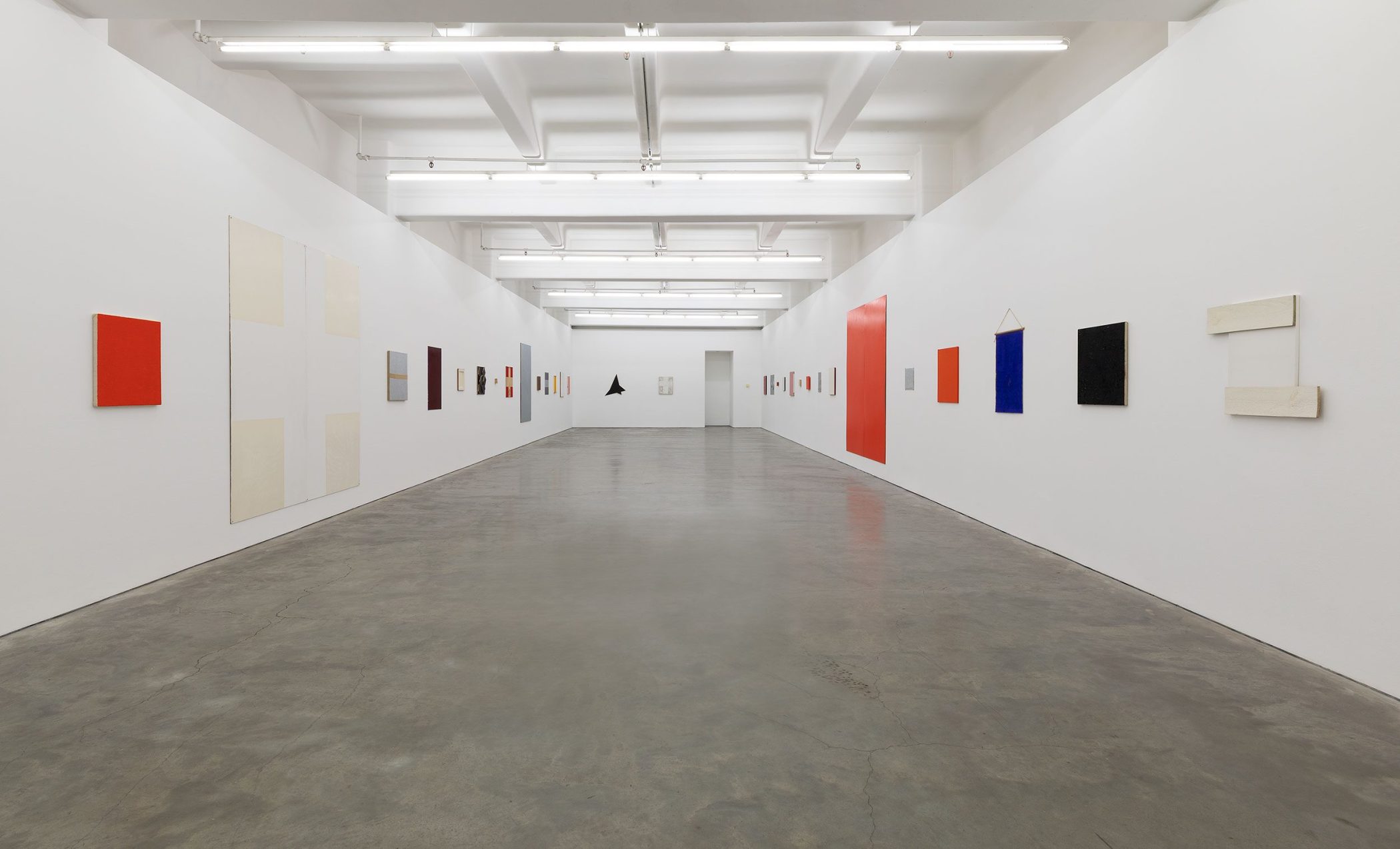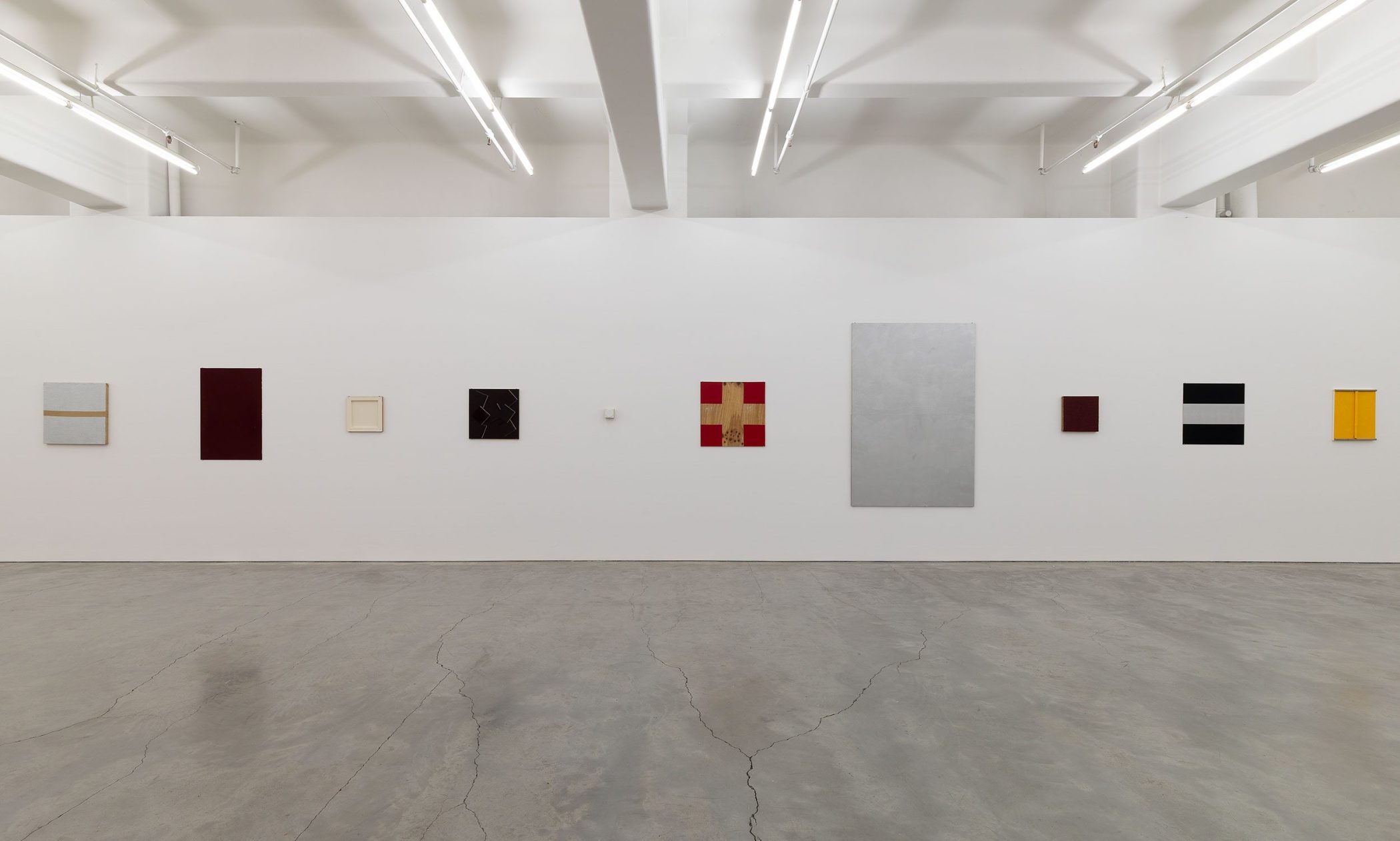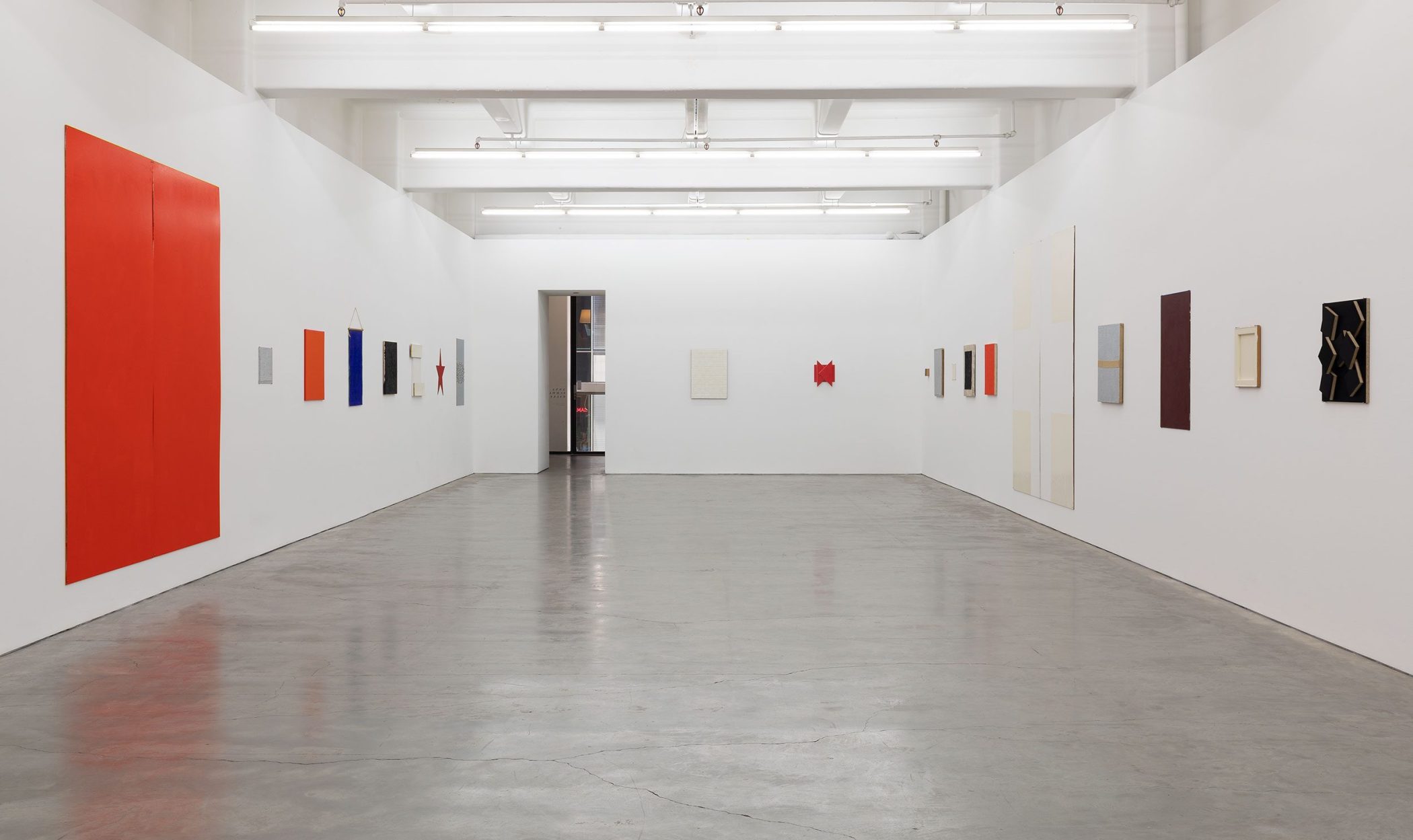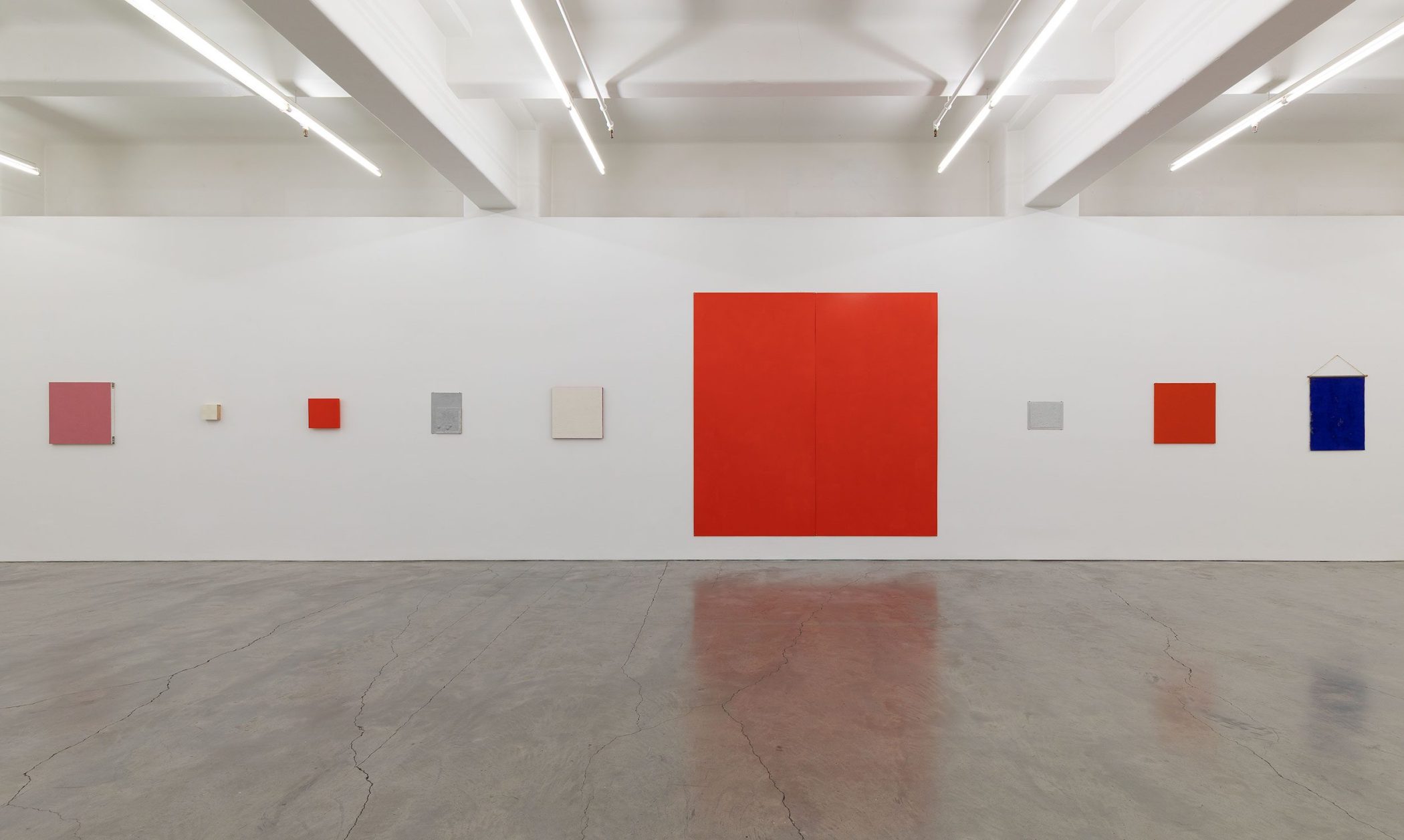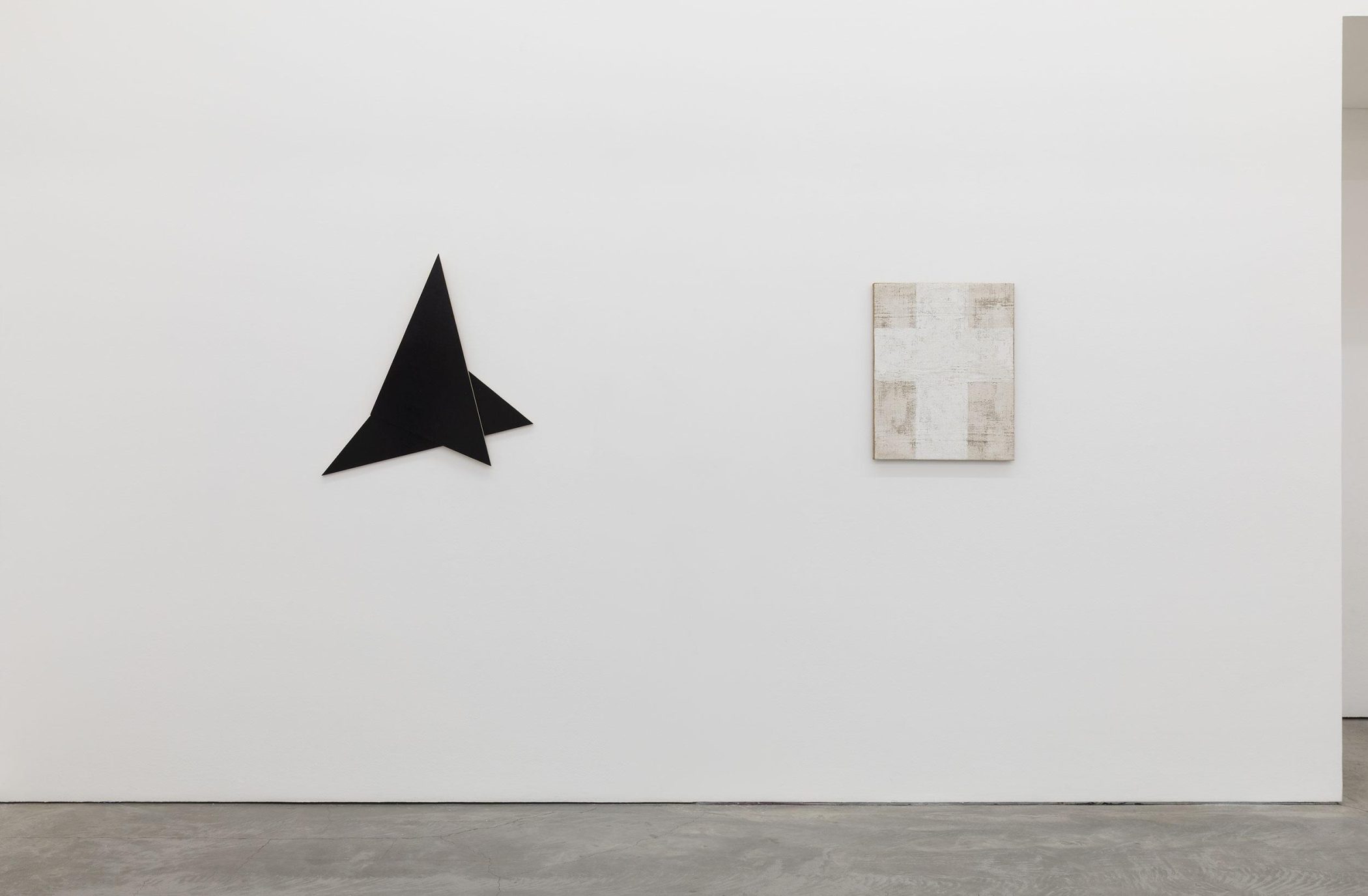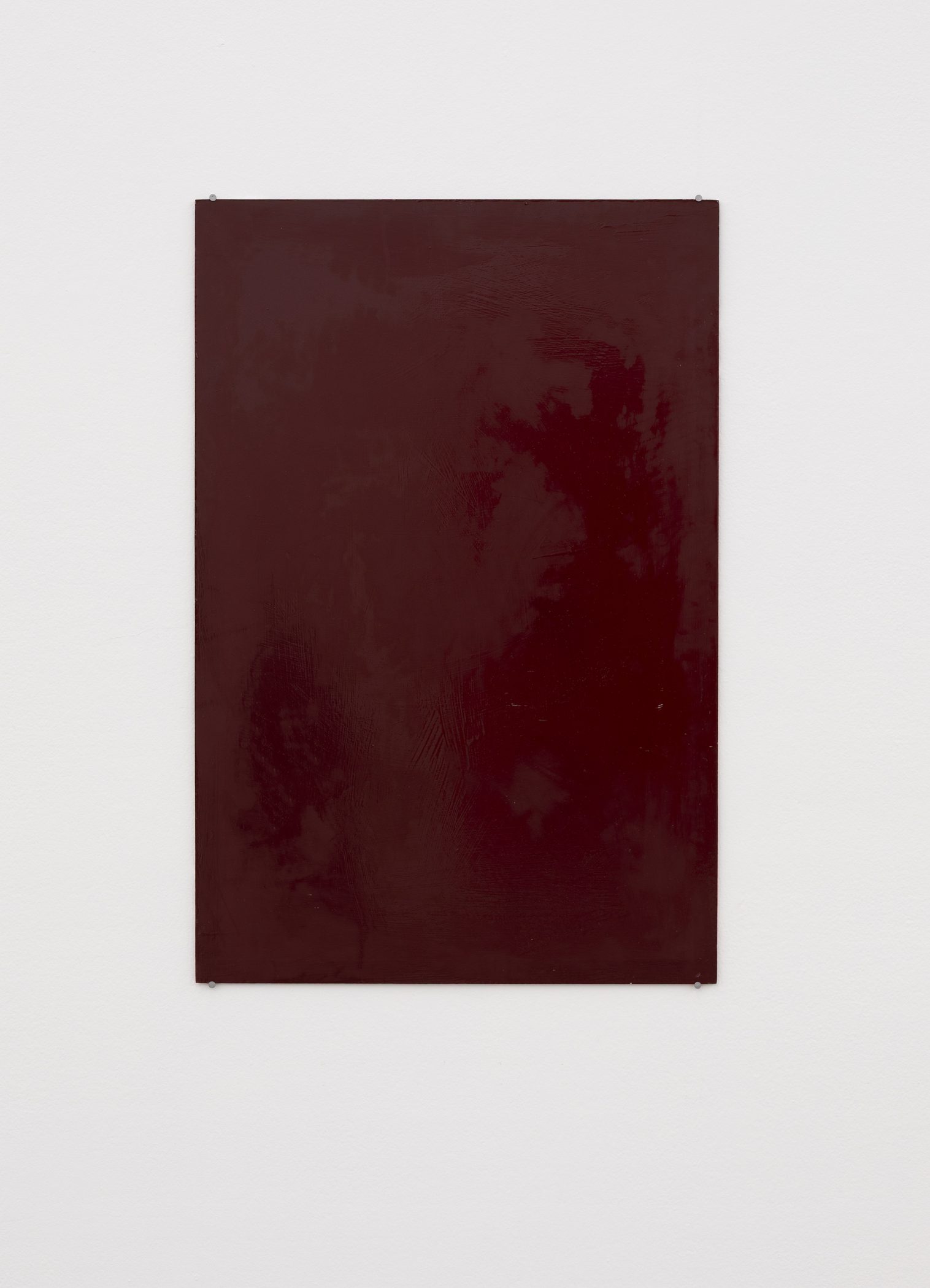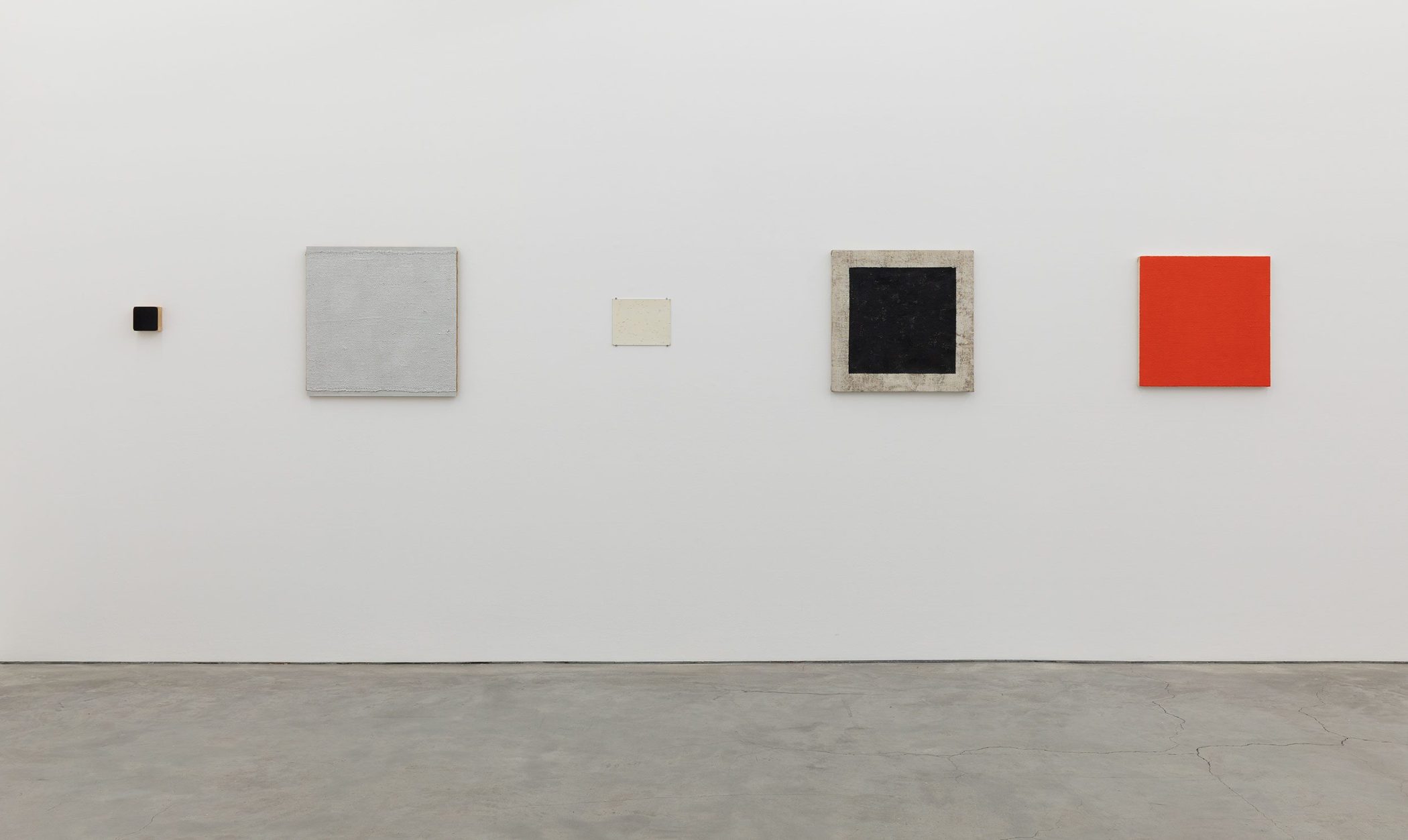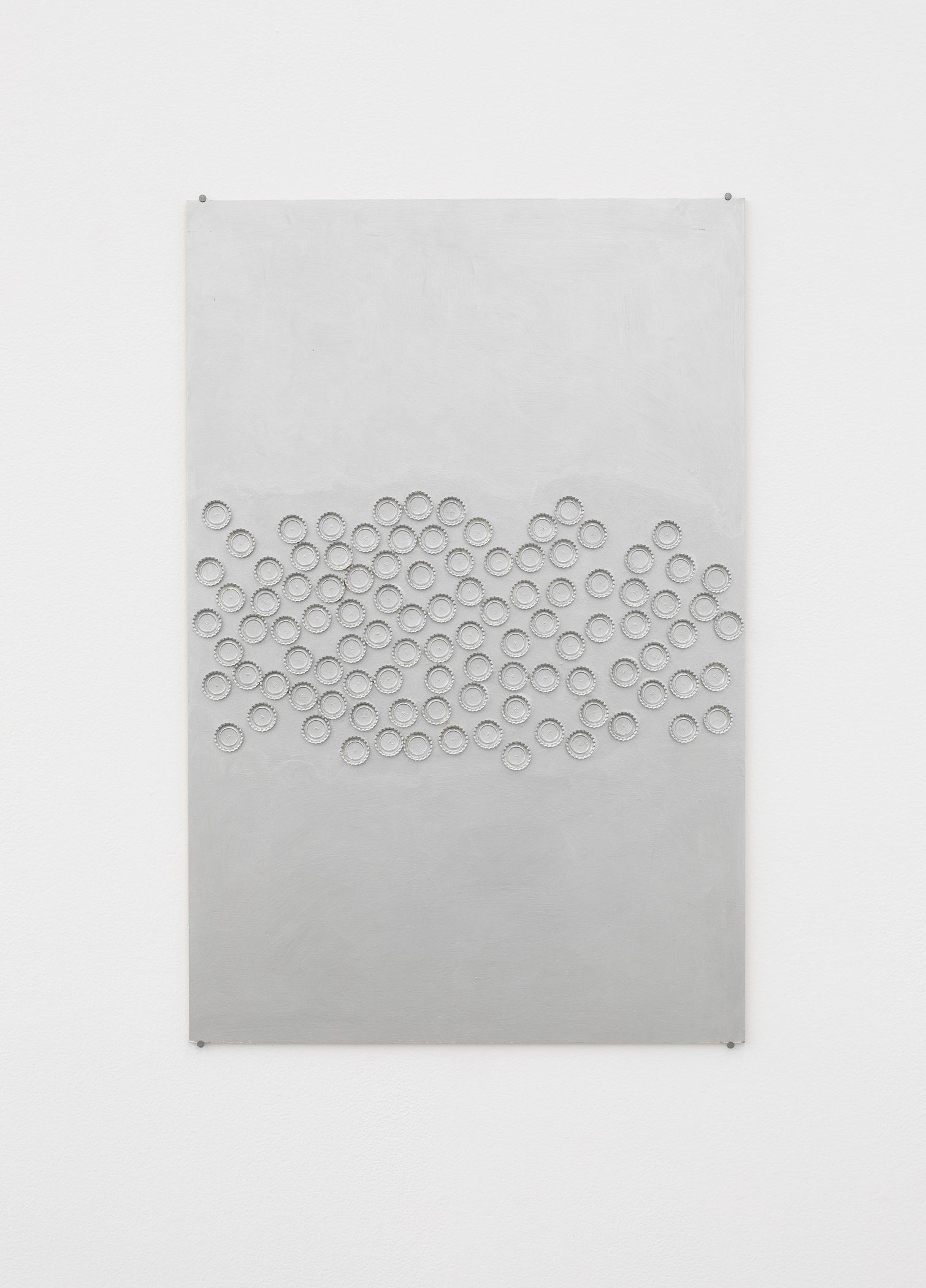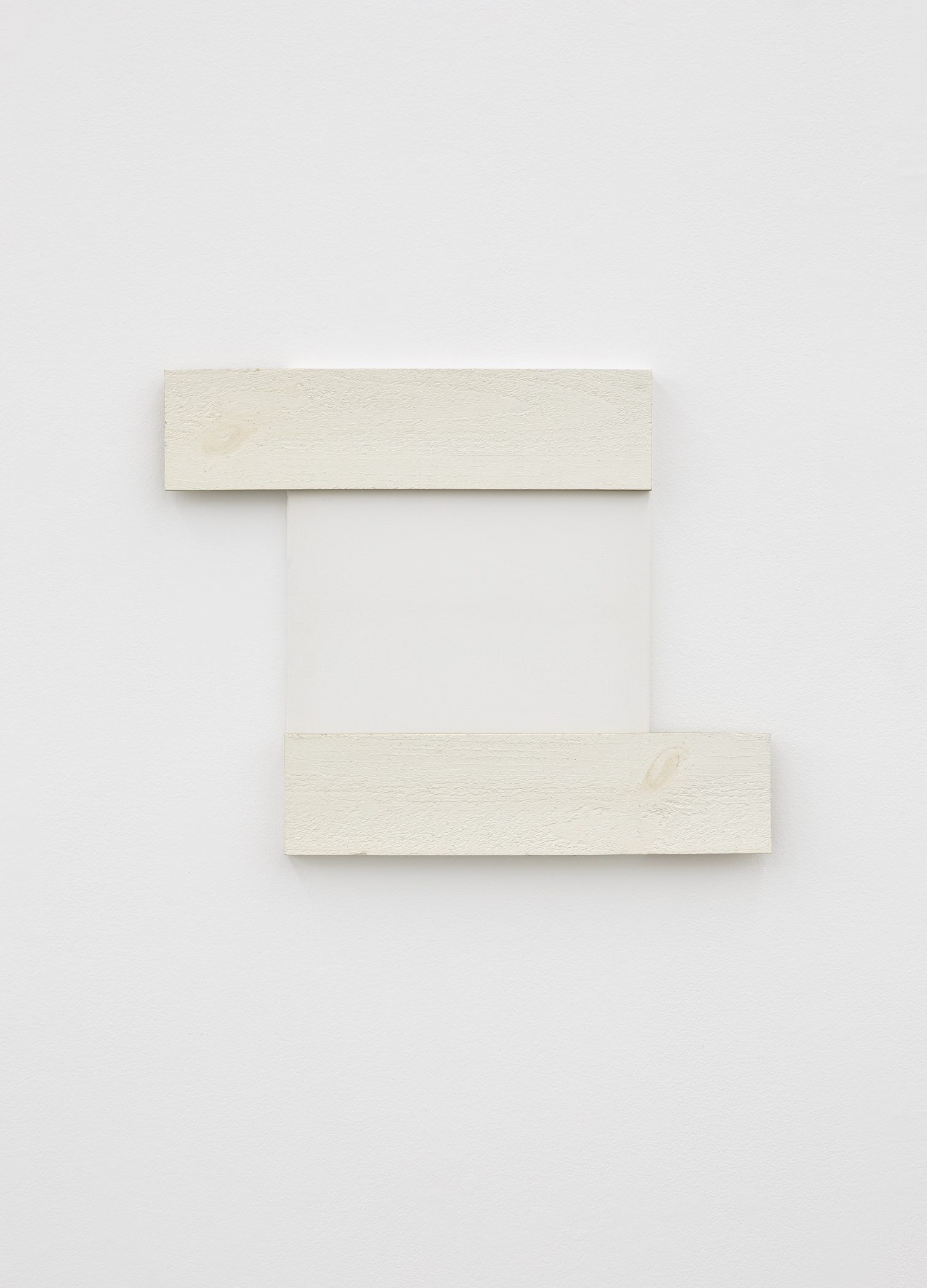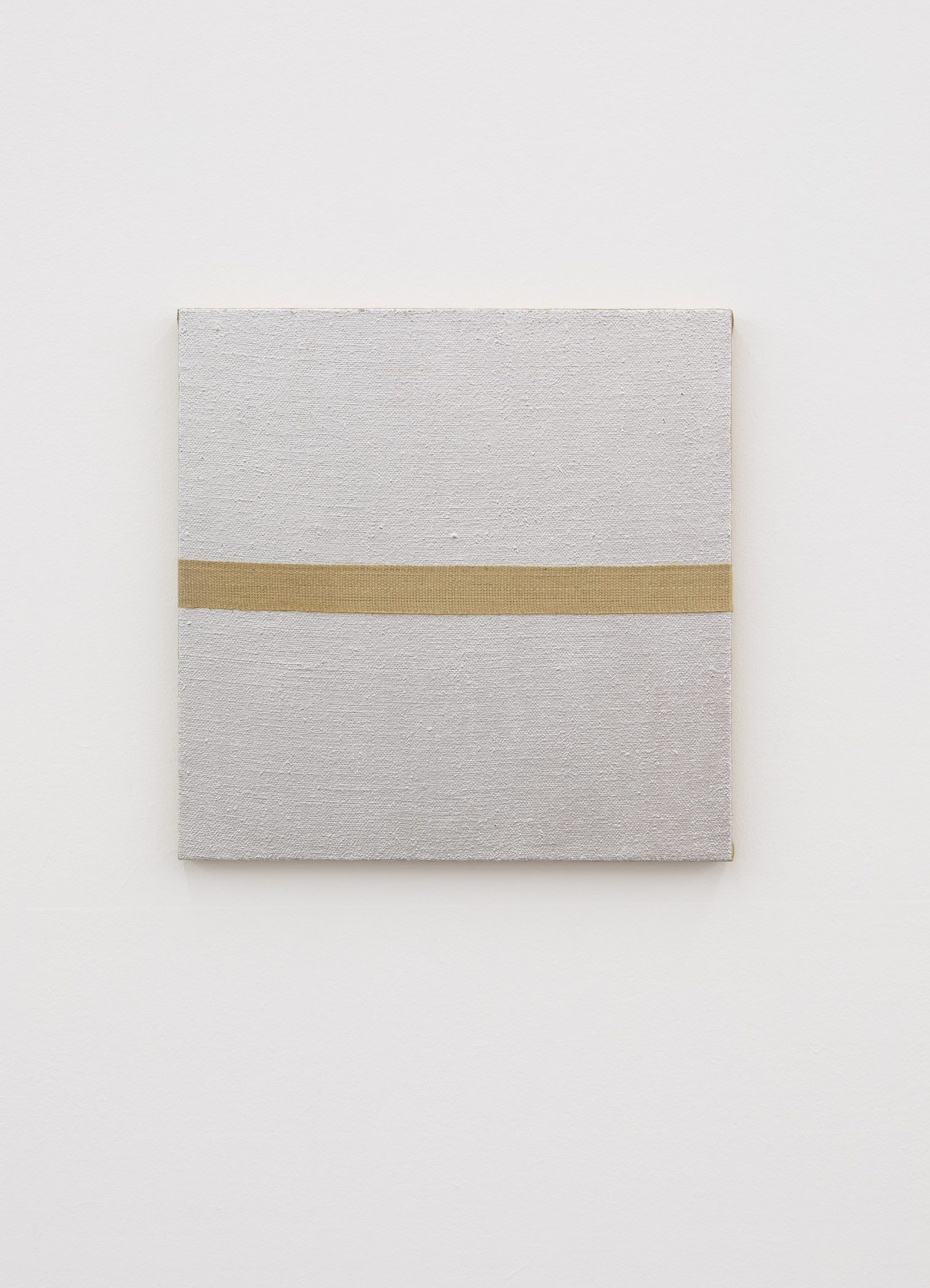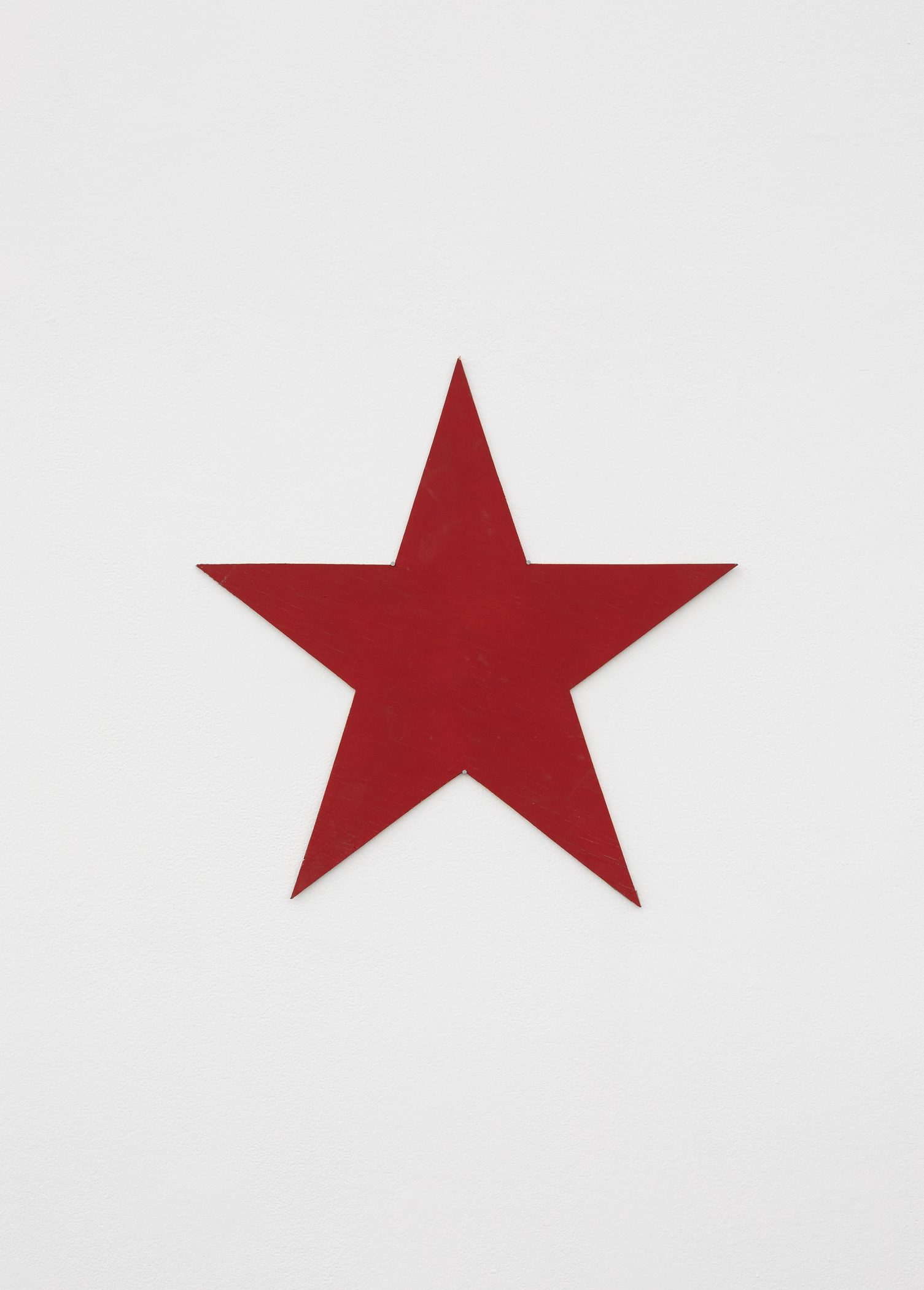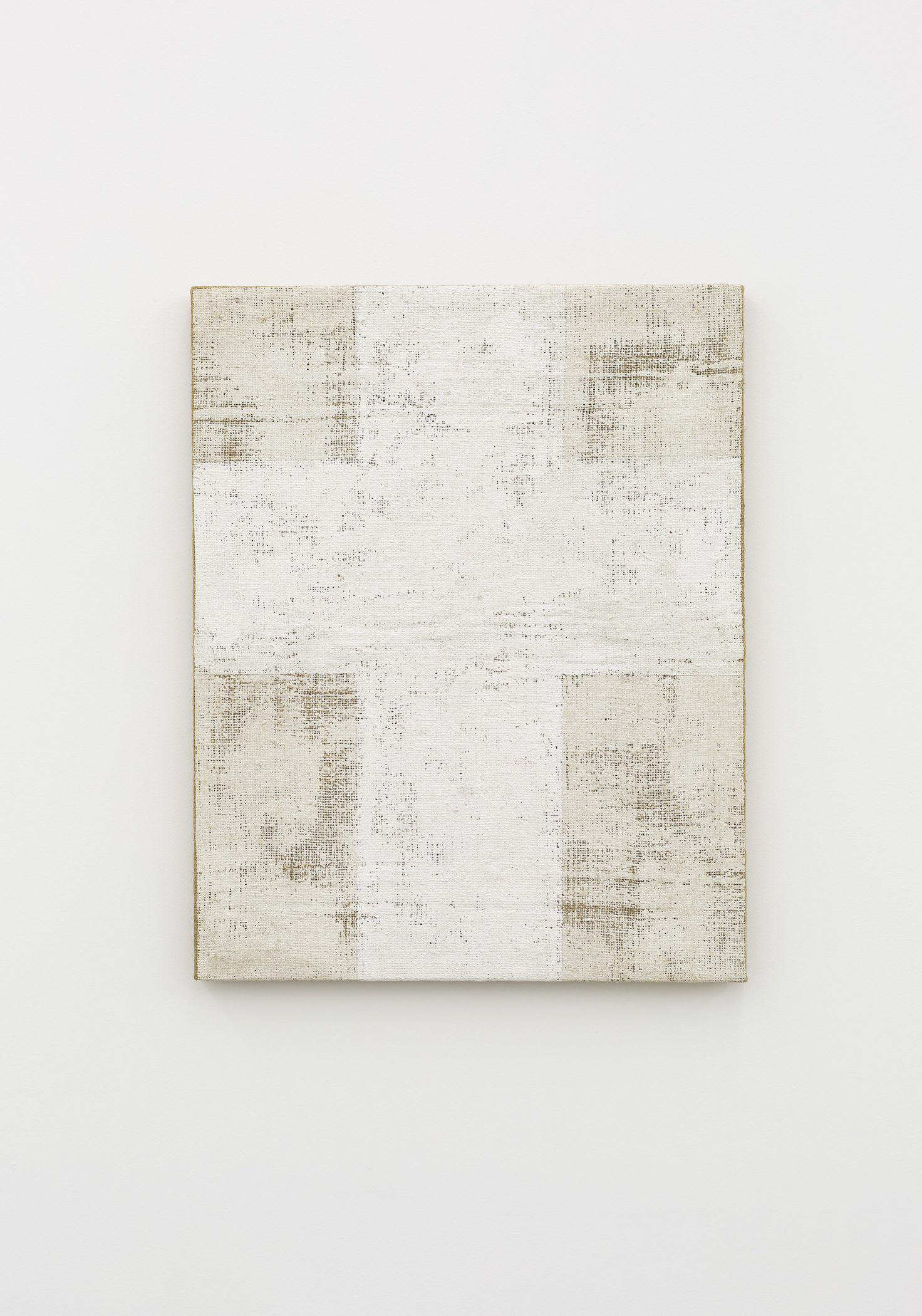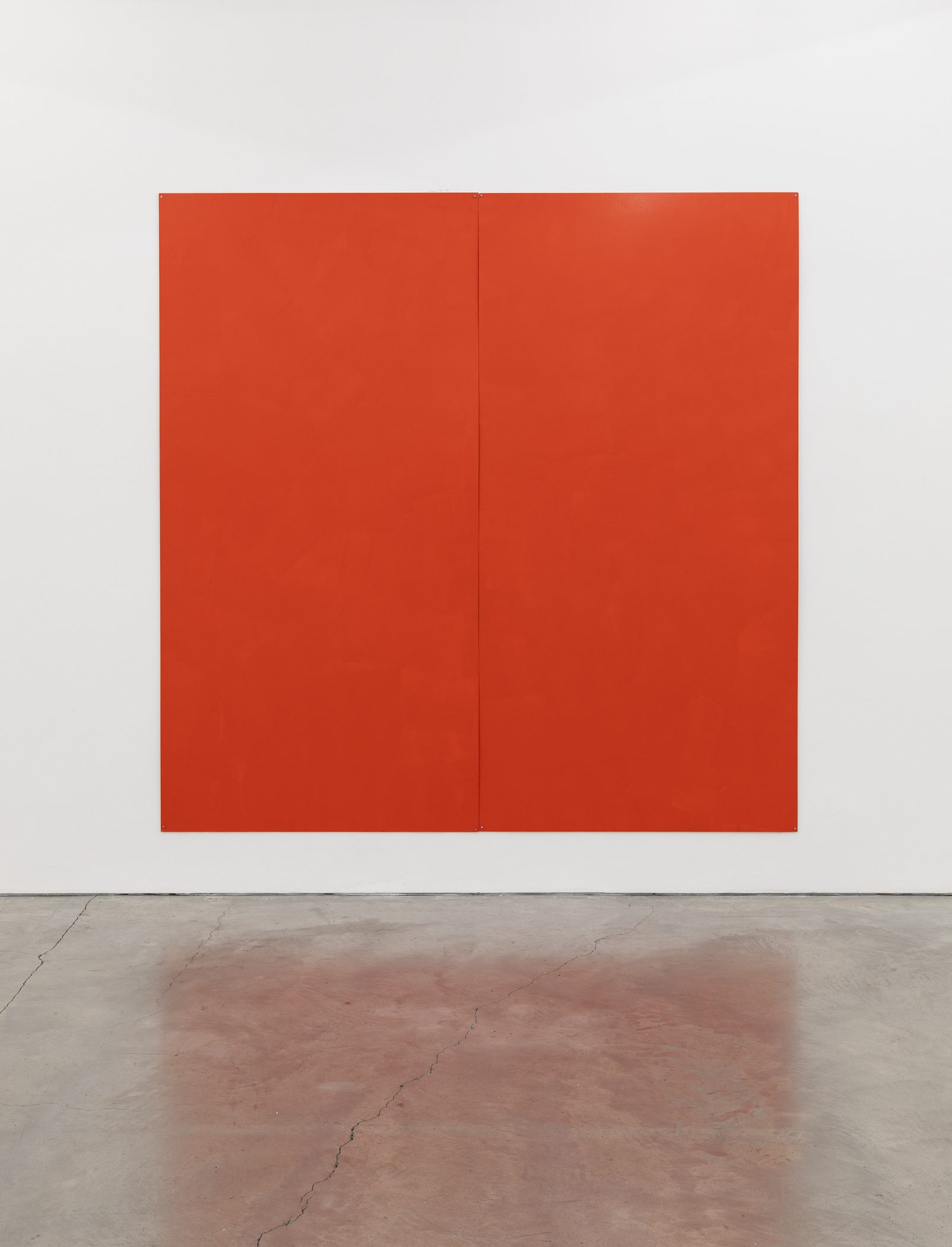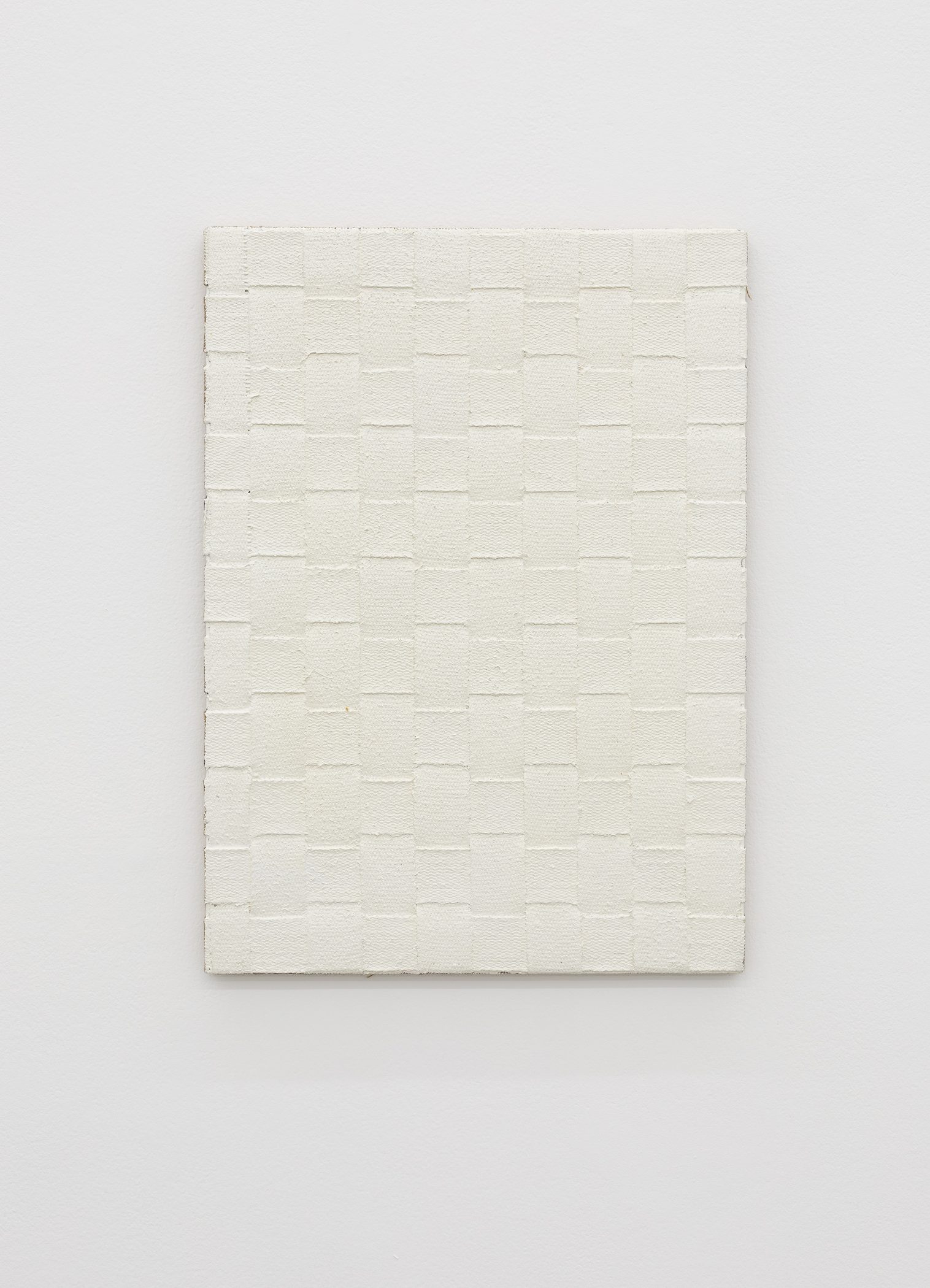John Nixon
Artist of the Monochrome
works from 1968 — 2020
18th October – 13th December 2025
Anna Schwartz Gallery
The title of this exhibition derives from a calling card offset printed by John in the 1990s, which states in plain Helvetica, black ink on white card: ‘John Nixon: Artist of the Monochrome’. With this simple yet profound description of himself, John affirms his strong sense of personal identification with this most fundamental of modernist archetypes — the epitome of non-objective abstraction. His lifelong investigation of the monochrome, in all its stark simplicity and nuanced complexity, is a continuous and vital aspect of his multifaceted oeuvre.
Nixon’s very first paintings from 1968 — the works he considered foundational to his practice — were monochromes: black Dulux enamel on canvas, raw canvas, and red or grey felt among other primary examples, scaled to just 9 × 9 × 4 cm. Their compact size and blocky shape gave rise to his term for them, Block Paintings. From that time onwards, John explored the monochrome at various scales and through the wide variety of quotidian materials characteristic of his oeuvre, returning repeatedly to one-colour painting as a generative touchstone or ‘zero point’ for his wide-ranging and exploratory practice.
By stripping art of the distractions of narrative and figuration, the monochrome became for him a means of concentrating on the essential question of art itself — its very nature and purpose — as he articulates with both rigour and poetry in his 1993 text, republished here, and through the diverse works on display in this exhibition.
Sue Cramer, 2025
MONOCHROME
1.THE MONOCHROME IS AN EXISTENTIAL ‘FREE SPACE’.
2. MONOCHROME PAINTING IS AN IDEOLOGICAL MODEL OF ART
AGAINST THE CONVENTIONAL, THE PICTORIAL, THE ORNAMENTAL
AND THE NARRATIVE.
3. THE PAINTINGS ARE BY DEFINITION MINIMAL AND REPRESENT AN
ANALYSIS OF THEIR OWN EPISTEMOLOGY AND ONTOLOGY FOCUSING
ON THE FUNDAMENTALS OF PAINTING, ITS FORMAL AND ANALYTICAL
NATURE AND ITS NON-OBJECTIVITY.
4. IN TERMS OF A THEORY OF ART THE WORKS ARE LITERAL AND
DEFINITIVE (AUTONOMOUS) BUT AS SUCH OFFER A FREEDOM OF
DEVELOPMENT AND EXPERIMENT.
5. WHAT MAKES ALL MONOCHROME PAINTINGS DIFFERENT FROM
EACH OTHER ARE PRECISELY THOSE ELEMENTS WHICH MAKE THE
OBJECTS OF EVERYDAY LIFE E.G. CHAIRS, COATS, PLATES,
DEMONSTRABLY DIFFERENT IE. THEIR MOMENT IN HISTORY, THE
CITIES WHERE THEY ARE MADE, THE METHODS OF THEIR
PRODUCTION, THEIR SIZES, MATERIALS AND COLOURS.
6. THE PRACTICE OF MONOCHROME PAINTING IS A CONTINUUM
WITHIN A HISTORY THAT IS NOT LINEAR, BUT IS A WIDER ONGOING
RESEARCH INTO THE THESIS OF PAINTING.
7. THE RESEARCH IS DIVERSE, POETIC AND CRITICAL.
8. THE MONOCHROME IS THE CONSTANT ZERO-POINT GROUNDING
THE WORK IN A DIALECTICAL BETWEEN PURITY AND ANARCHY,
HISTORY AND THE PRESENT.
JOHN NIXON
SYDNEY 3.12.93
